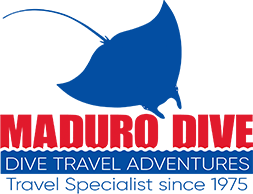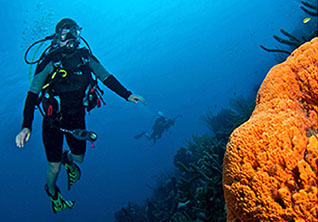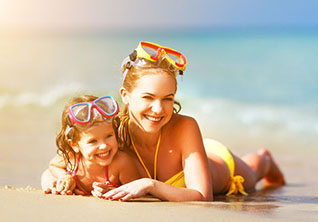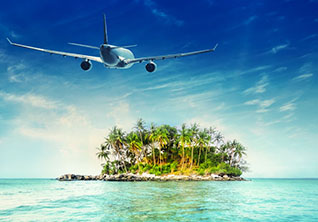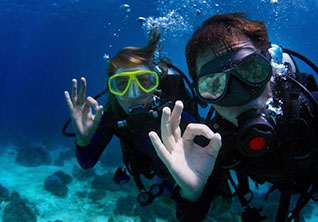St. Lucia is an Eastern Caribbean island. Scuba diving offers varied experiences because the island lies between the Atlantic and Caribbean Sea. Arawak Indians in 200AD named it Louanalao, meaning Island of the Iguanas. Subsequently, in 800AD the Carib Indians arrived and assimilated their culture. Carib descent can still be found on island today. Similarly, Dutch, French and English settlers began arriving in the 1600s. The English took control in 1814. Inhabitants of the island derive from Indian, African and European cultures. Official language is English with Creole spoken locally.
Diving St. Lucia
Together with colorful reefs; walls, wrecks, slopes, pinnacles and canyons form the underwater world topography. Likewise, fringing reefs also allow for shore diving. There are 25 named dive sites. The majority are in the central to southern section of the country. They are protected by the Marine Park and Soufriere Marine Management Association. There are hundreds of marine species, invertebrates, crustaceans, sponges, soft and hard corals. Beyond, smaller marine inhabitants expect eels, sharks, rays and turtles.
St. Lucia scuba diving sites will satisfy all divers. Such as, the 165-foot freighter wreck Lesleen M home to soft coral, sponges, hydroids and many fish. Also, Pinnacles has four spectacular seamounts that rise dramatically from the depths. These structures shelter trumpet fish, filefish and seahorses. Besides hawksbill and green turtles, there are pillar coral as well as barrel sponges at Turtle Reef. The Anse La Raye wall highlights colorful reefs and is popular for underwater photography. Lastly, Rosemond’s Trench is a must dive. Expect valleys, trenches, a small tunnel all with seahorses, frogfish and turtles.
Accommodations, Attractions, Activities
Larger luxury resorts, small to upscale boutique hotels have appeal for all travelers. Especially, the Pitons are famous landmarks to explore. Each Piton has its own name: Gros Piton (at 2,530 ft high) and Petit Piton (at 2,438 ft high). Here, exotic plants and animals call the area home. Also, you can sail to see the Pitons from the water. Pigeon Island is a National Park and site of the British Fort Rodney. Next, visit the Folk Research museum in Castries. In Soufrière, see St. Lucia Diamond Falls Botanical Gardens. Hike out to Toraille to cool off in the natural rainforest. Similarly, Edmund Forest Reserve is a must for its waterfalls, rushing streams and best views of the island. Beaches, hiking, ziplining, numerous day tours compliment scuba diving, kayaking, snorkeling, and swimming.
